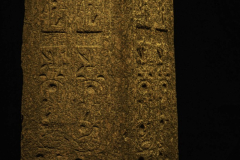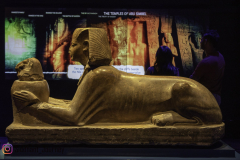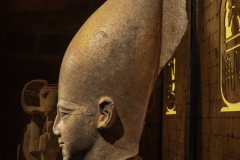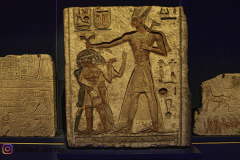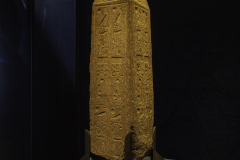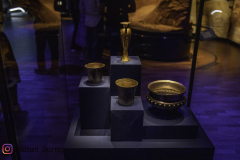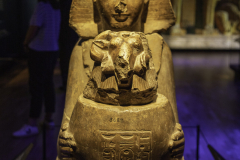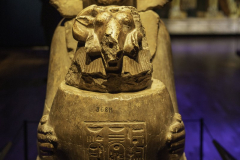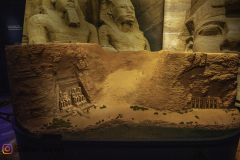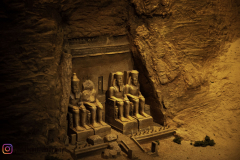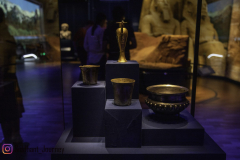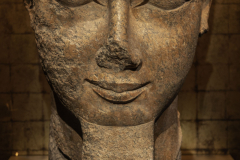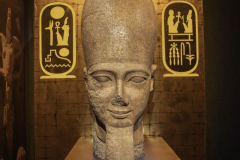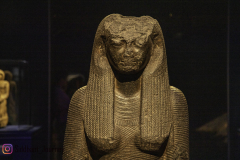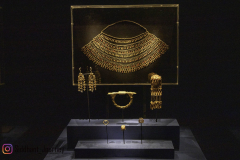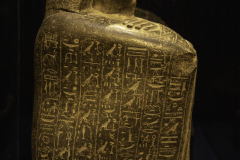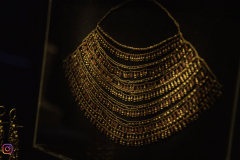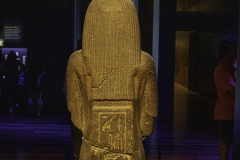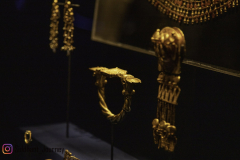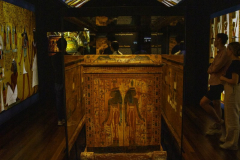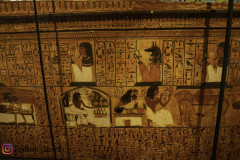Category: History
Bali Traditional Dance.
World Oldest Mc Donald.
Ramses And Gold Of The Pharoahs Sydney Exhibition
Ramses: A History Of The Pharoah
The legacy of Ramses II, also known as Ramses the Great, stands as a testament to the grandeur and power of the ancient Egyptian pharaohs. As one of the most celebrated rulers in Egypt’s history, Ramses II left behind a rich and awe-inspiring cultural heritage. Among the many treasures associated with Ramses II, gold holds a prominent position. The fascination with gold in ancient Egypt, coupled with the discovery of Ramses II’s tomb and the abundance of golden artifacts within, offers a captivating glimpse into the opulence and symbolism attached to this precious metal in pharaonic culture. This article delves into the captivating world of Ramses II and the gold of the pharaohs, unraveling the stories, significance, and allure behind these remarkable treasures.
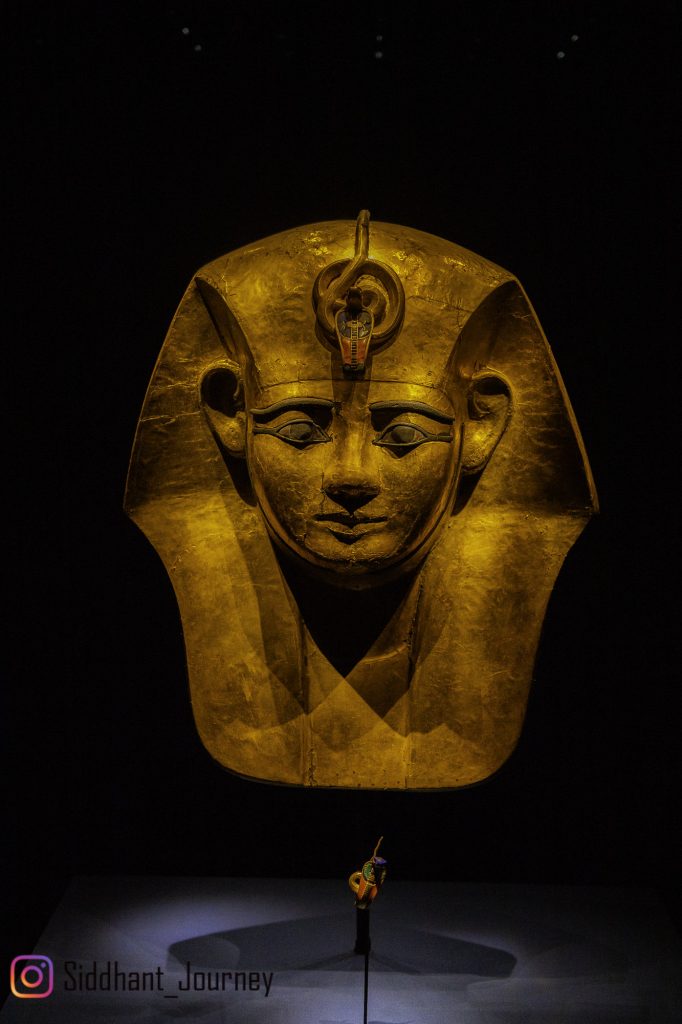
1. Introduction to Ramses II: The Powerful Pharaoh
1.1 The Life and Rule of Ramses II
Ramses II, also known as Ramses the Great, was one of the most powerful pharaohs in ancient Egypt. He ruled for an impressive 66 years, from 1279 to 1213 BCE. During his reign, Ramses II established Egypt as a dominant force in the region and left behind a legacy that continues to fascinate historians and archaeologists today.
1.2 Ramses II’s Legacy: Influence on Ancient Egypt
Ramses II’s impact on ancient Egypt cannot be overstated. He was a prolific builder, constructing numerous awe-inspiring monuments and temples throughout the kingdom. Most notably, he commissioned the construction of the magnificent Abu Simbel temples, which still stand proudly on the banks of the Nile River.
In addition to his architectural feats, Ramses II was a skilled military strategist. He led several successful military campaigns, expanding Egypt’s territory and securing its borders. He also played a significant role in shaping cultural and religious practices during his reign, leaving his mark on ancient Egyptian society.
2. The Obsession with Gold in Ancient Egypt
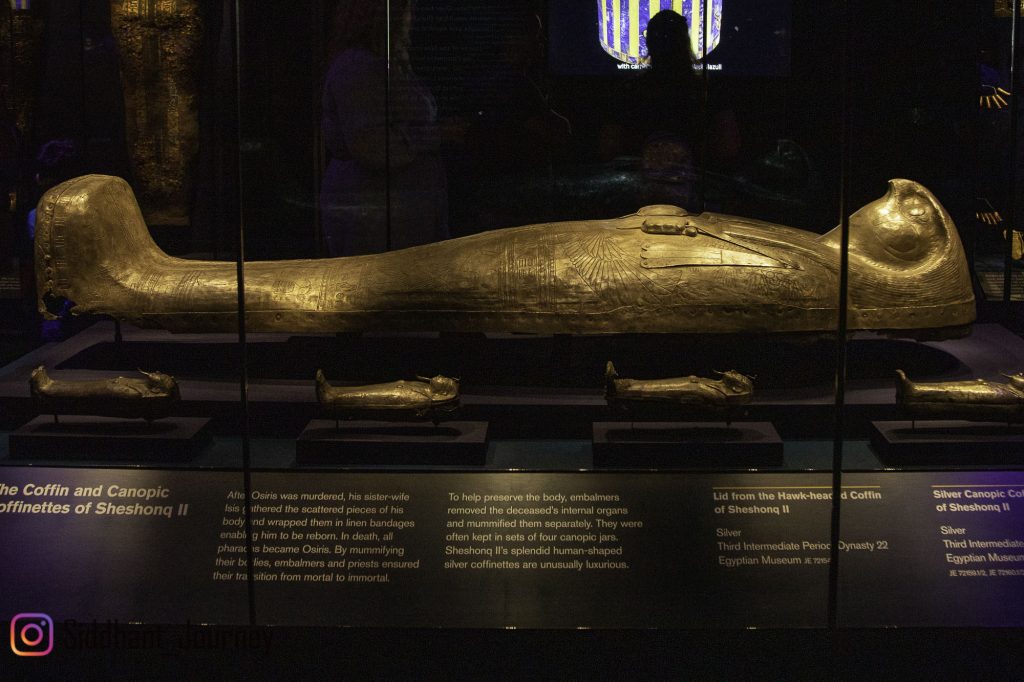
2.1 Significance of Gold in Ancient Egyptian Culture
Gold held immense value and symbolism in ancient Egyptian culture. It was associated with the divine and considered a material fit for the gods and pharaohs. The Egyptians believed that gold was the flesh of the sun god, Ra, and its brilliance represented eternal life and wealth. As a result, gold was highly sought after and used in various aspects of Egyptian life, from religious rituals to personal adornment.
2.2 Gold Mining and Extraction Techniques
To fulfill their obsession with gold, the ancient Egyptians developed sophisticated techniques for mining and extracting the precious metal. They primarily sourced gold from the Nubian Desert, using both surface mining and underground tunnels to access the rich deposits. Once extracted, the gold was processed using crushing, grinding, and smelting methods to separate it from the surrounding rock. These advanced techniques allowed the Egyptians to amass significant amounts of gold for their various purposes.
3. The Discovery of Ramses II’s Tomb: Unearthing a Treasure Trove
3.1 The Excavation of Ramses II’s Tomb
The discovery of Ramses II’s tomb in the Valley of the Kings in 1881 was a monumental moment in archaeology. Led by renowned archaeologist Gaston Maspero, the excavation team painstakingly unearthed the burial chamber of Ramses II. The tomb, though looted in ancient times, still contained remarkable artifacts and insights into the life of this legendary pharaoh.
3.2 Archaeological Significance of the Findings
The discovery of Ramses II’s tomb provided valuable information about ancient Egyptian burial practices and the level of grandeur associated with pharaohs. The presence of numerous funerary objects, including statues, jewelry, and pottery, displayed the opulence reserved for the elite in the afterlife. The findings also shed light on the religious beliefs and cultural traditions of ancient Egypt, offering a glimpse into a civilization that continues to captivate the world.
4. The Extravagant Use of Gold in Ramses II’s Burial Chamber
4.1 Description of Ramses II’s Burial Chamber
Ramses II’s burial chamber was a testament to the pharaoh’s status and the importance of gold in ancient Egypt. The chamber itself was vast and adorned with intricate carvings and paintings, depicting scenes from Egyptian mythology and the pharaoh’s accomplishments. The walls were covered in gold leaf, casting a warm and ethereal glow throughout the chamber.
4.2 Gold Adornments and Decorations
Gold played a significant role in the adornments and decorations within Ramses II’s burial chamber. The sarcophagus, in which the pharaoh’s mummified body was placed, was made of solid gold, further emphasizing the belief in the divine nature of this precious metal. The funerary masks, jewelry, and even the furniture within the chamber were elaborately crafted from gold, showcasing the pharaoh’s wealth and status even in death.
Ramses II’s tomb stands as a testament to the grandeur and obsession with gold in ancient Egypt, leaving us in awe of the power and opulence of this legendary pharaoh.
5. The Symbolism of Gold in Pharaonic Culture
Gold held a special place in the hearts (and adornments) of ancient Egyptians. It wasn’t just a shiny metal; it was a symbol of power, divinity, and the regal splendor of the pharaohs. Let’s delve into the significance of gold in their culture.
5.1 Gold as a Symbol of Royalty and Divinity
In ancient Egypt, gold was synonymous with royalty. The pharaohs, considered living gods, made sure to flaunt their divine status by encrusting themselves in gold. From golden crowns adorning their heads to intricate jewelry gracing their bodies, gold was the precious metal of choice for the rulers of Egypt.
The gleaming yellow hue of gold mirrored the sun, which Egyptians worshipped as a deity. By donning gold, the pharaohs sought to establish a connection to the gods and convey their divine authority to their subjects.
5.2 Religious and Spiritual Significance of Gold
Beyond its association with pharaonic power, gold held immense religious and spiritual significance for the ancient Egyptians. They believed that the gods themselves possessed bodies of pure gold. Temples and statues dedicated to deities were often covered in gold leaf, an homage to the divine.
Moreover, gold was believed to have protective and purifying qualities. It was used in funerary rites to guide the deceased through the afterlife and ward off evil forces. The Egyptians were so enamored with gold’s spiritual properties that they even believed it could grant immortality.
6. Unveiling the Secrets of Ramses II’s Golden Artifacts
Now, let’s turn our attention to Ramses II, one of Egypt’s most revered pharaohs, and the golden artifacts that have survived the test of time.
6.1 Analysis of Ramses II’s Golden Artifacts
Ramses II, also known as Ramses the Great, left a glittering legacy. His golden artifacts reveal not only his opulence but also his keen eye for detail and craftsmanship. Intricately carved gold statues, exquisite jewelry, and golden sarcophagi bear testament to his extravagant reign.
These artifacts provide us with a glimpse into the life and times of Ramses II, showcasing his wealth and power, as well as the artistic mastery of the craftsmen who created them.
6.2 Techniques Used in Crafting Pharaonic Gold Art
Crafting pharaonic gold art was no ordinary feat. The ancient Egyptians employed techniques like gold casting, filigree, and granulation to fashion their masterpieces. Gold was shaped into delicate forms, and gemstones were often incorporated to add color and further enhance their allure.
These ancient artisans understood the properties of gold, its malleability, and its ability to withstand the test of time. Their craftsmanship, combined with the wealth of Ramses II, resulted in extraordinary artifacts that continue to captivate us today.
7. The Legacy of Ramses II: Gold and Egypt’s Ancient Civilization
Ramses II’s golden reign left an indelible mark on Egyptian history and culture. Let’s explore the lasting impact he had on subsequent pharaohs and the influence of gold on Egyptian art, trade, and society.
7.1 Influence of Ramses II on Subsequent Pharaohs
Ramses II set a royal standard that many pharaohs sought to emulate. His grandiose use of gold as a symbol of power and divinity became a tradition amongst his successors. The obsession with gold persisted throughout Egyptian history, marking the pharaoh as the supreme bearer of wealth and authority.
7.2 Gold’s Impact on Egyptian Art, Trade, and Society
The importance of gold extended beyond the realm of the pharaohs. Its influence permeated Egyptian art, influencing the aesthetics of statues, jewelry, and even architecture. Gold became a sought-after commodity, leading to prosperity and trade within the ancient civilization. Its value reached far beyond its material worth.
Gold also played a crucial role in Egyptian society, both in terms of religious rituals and personal ornamentation. It symbolized wealth, status, and was an integral part of Egyptian culture.
8. Conclusion: Ramses II’s Golden Reign and the Enduring Fascination with Pharaohs
Ramses II’s affinity for gold and the astonishing artifacts he left behind continue to captivate our imagination. The symbolism of gold in pharaonic culture, the intricate craftsmanship, and the lasting legacy of Ramses II highlight the magnificence of ancient Egypt.
Even today, the allure of the pharaohs and their golden treasures persists, reminding us of a civilization that valued power, divinity, and the eternal splendor of this precious metal. Let Ramses II’s golden reign inspire us to appreciate the enduring fascination with Egypt’s ancient civilization.
8. Conclusion: Ramses II’s Golden Reign and the Enduring Fascination with Pharaohs
In conclusion, Ramses II’s reign as a powerful pharaoh left an indelible mark on ancient Egyptian history. The extensive use of gold in his burial chamber and the numerous golden artifacts discovered within his tomb showcase the immense wealth and reverence associated with this iconic ruler. The enduring fascination with pharaohs and the allure of their golden treasures continues to captivate the world, allowing us to appreciate the splendor and cultural significance of Ramses II and the gold of the pharaohs. Through their legacy, these precious artifacts provide a tangible connection to a bygone era, reminding us of the remarkable achievements and timeless allure of Egypt’s ancient civilization.
FAQ
1. Why was gold so important in ancient Egypt?
Gold held immense significance in ancient Egyptian culture for several reasons. It was associated with the sun god Ra, symbolizing divinity, power, and the eternal nature of the pharaohs. Gold was also believed to possess magical and protective properties, making it an integral part of religious rituals and ceremonies. Additionally, gold was considered a symbol of wealth, luxury, and prosperity, reflecting the grandeur and opulence of the pharaohs.
2. What was the significance of Ramses II’s golden artifacts?
Ramses II’s golden artifacts hold great significance as they provide a glimpse into the artistry, craftsmanship, and wealth of ancient Egypt. These artifacts, such as elaborate jewelry, statues, and ornate burial items, demonstrate the meticulous attention to detail and skill of the artisans of that time. They also serve as a testament to Ramses II’s legacy and his desire to leave a lasting mark on Egyptian history through the use of precious metals, particularly gold.
3. How were Ramses II’s golden artifacts discovered?
Ramses II’s golden artifacts were discovered during the excavation of his tomb in the Valley of the Kings, located on the west bank of the Nile River near modern-day Luxor. The tomb, known as KV7, was the final resting place of Ramses II and was discovered by archaeologists in the early 19th century. The tomb contained a treasure trove of valuable items, including golden artifacts, which provided invaluable insights into the wealth and splendor of the pharaoh during his reign.





